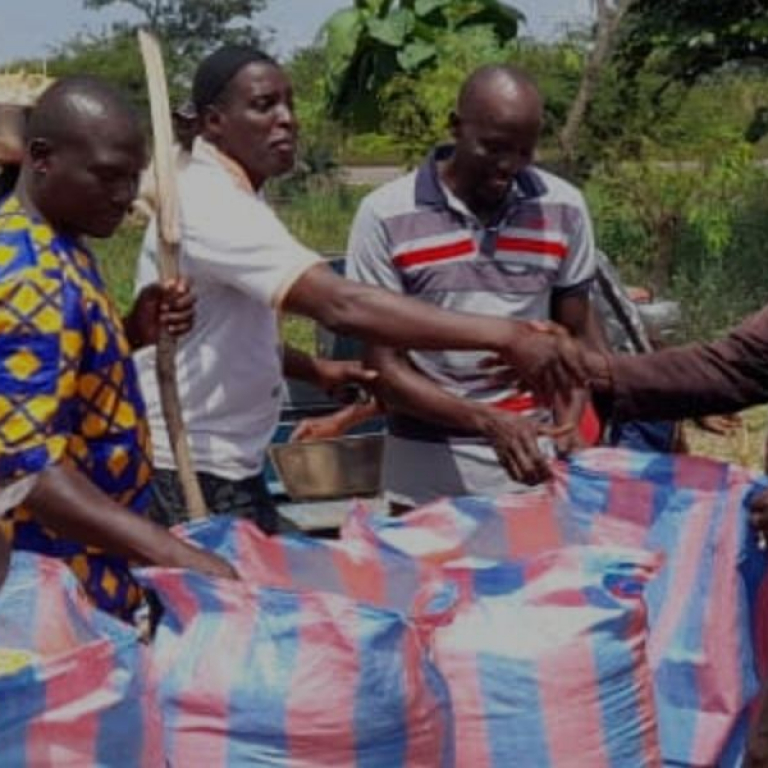How do MASTROP varieties increase my earnings compared to conventional seeds?
Compared to the cultivation of a classical population variety, the cultivation of MASTROP allows to increase the income per hectare thanks to a significantly higher yield.
.png)
.png)
(Summary table of the gain for the farmer who chooses MASTROP seeds (*). Click here)
Trials conducted successively in 2020 and 2021 on our demonstration plots in northern Côte d'Ivoire have shown that yields are multiplied by 2, 3 or 4 with MASTROP seeds compared to the national average.
One reliable indicator of this profitability is the gross margin (gross farm income in the table), i.e. the difference between the income from the crop and the expenses spent on producing the crop. A significant increase in yield results in a significant increase in gross margin. For example, at a maize seed purchase price of 125 CFA francs per kilogram, a yield of 5.5 tons could bring in 687,500 CFA francs gross per hectare for the farmer.
Finally, based on the costs indicated by local producers in 2021 for their maize cultivation and a conservative estimate of their maize selling price (see our table above), the cultivation of MASTROP could bring in between 200,000 and 800,000 CFA per hectare depending on the yield obtained (margin on direct costs).
I have chosen MASTROP, how can I guarantee the success of my crop?
The first factor for success in achieving higher yields is the choice of seed. The second is the adoption of appropriate cultivation practices. Once a plot of land has been chosen for corn production, producers will carry out cultivation work that will determine their best chances of profitability.
.jpg)
1- Prepare the soil well before sowing: it is recommended to carry out a bottom manuring (manure or compost) by the contribution of organic matter then a ploughing. Moreover, a fine and levelled seedbed, without clods or holes, is favourable to the sowing work, and will favour the germination and the emergence of the crops.
2- Sow MASTROP varieties at an adequate density: sowing should be done with 1 seed per hole at a minimum density of 62,500 (about 2 bags of 10Kg). The germinative qualities of MASTROP ensure the germination of the sown seeds.
3- Protect the crop against parasites or weeds: it is essential to monitor the crop throughout its development cycle and to act accordingly in case of insect, fungus or weed pressure. The use of phytosanitary products or the use of mechanical or manual tools are all means of control.
4- Irrigate: water is an essential element for the growth and development of plants. It is particularly important during the flowering period and then during the first phase of grain filling. If rainfall is not sufficient at these times, it is necessary to provide additional water through irrigation.
5- Fertilization adapted to yield objectives/capacities: N-P-K fertilizer is used to nourish the plant in order to promote its growth and grain production. For an objective yield of 5.5 T/ha, we recommend using 6 bags of 50Kg fertilizer, type 23-10-5 per hectare. It is also possible to increase the dose of fertilizer applied to express the full potential of MASTROP varieties, about more than 10T/ha.
For more information, contact the MAS Seeds sales team on site.
.jpg)
(*) the prices displayed are those of the 2021 campaign, these prices may vary from year to year.
A lire aussi




